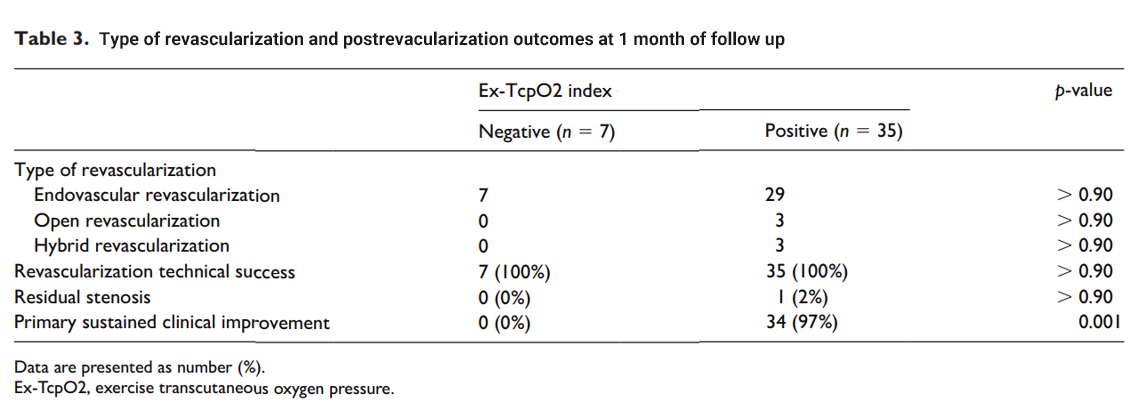Clinical improvement after arterial revascularisation is associated with exercise oximetry results
Selected in Vascular Medicine by Jana Hammoud
This study explores the association between exercise transcutaneous oxygen pressure (Ex-TcpO2) results and postoperative outcomes in patients with intermittent claudication (IC). Findings suggest that Ex-TcpO2 could help refine patient selection, especially in cases of atypical or uncertain arterial claudication.
References:
Authors: Mohammad Zagzoog, Ewa Tuleja, Ulrique Michon-Pasturel, Benoît Boura, Romain De Blic, Lucie Derycke, Alexandros Mallios, Maxime Raux and Yann Gouëffic
Reference: Vasc Med . 2025 Feb 24:1358863X251313964
DOI: 10.1177/1358863X251313964
Read the abstractObjective:
The main objective of this study was to describe the association between the Ex-TcpO2 results and the perioperative clinical and morphological outcomes after revascularisation in patients with IC, including primary sustained clinical improvement and patency rate.
Study:
Prospective monocentric non-randomised comparison of Ex-TcpO2 results and post-operative outcomes in patients with IC to evaluate Ex-TcpO2 as a diagnostic test in atypical claudications.
Population:
82 patients with atypical IC underwent Ex-TcpO2 test before surgery.
Endpoint:
Primary endpoint was the echodoppler results with clinical improvement of the Rutherford classification.
Outcomes and conclusion:
Benefit of using Ex-TcpO2 in the diagnosis of patients with IC, especially in patients with atypical claudication or claudication of doubtful arterial origin.

Get the latest clinical cases and breaking news delivered straight to your inbox!


Comments
Key Findings
Limitations